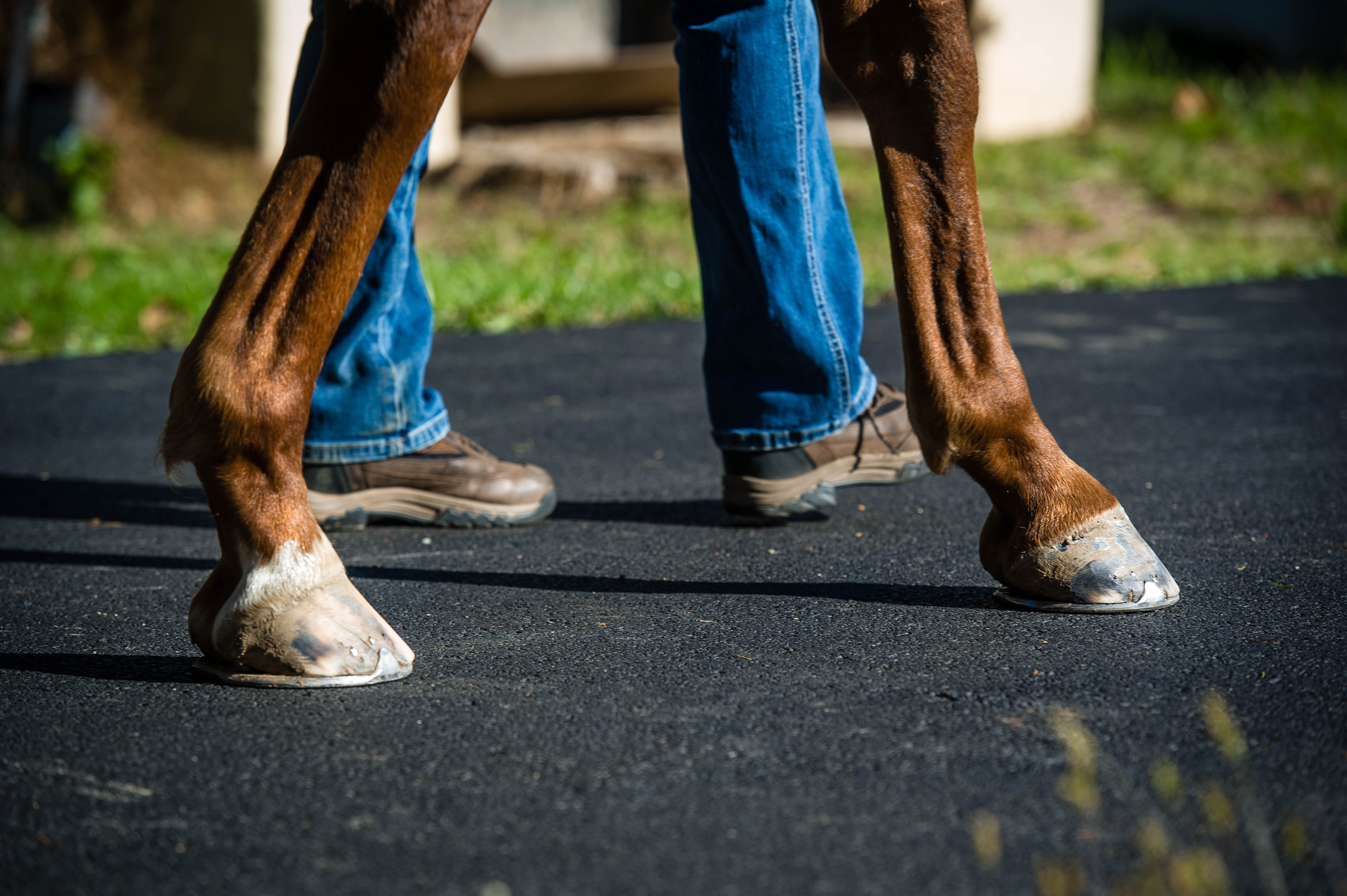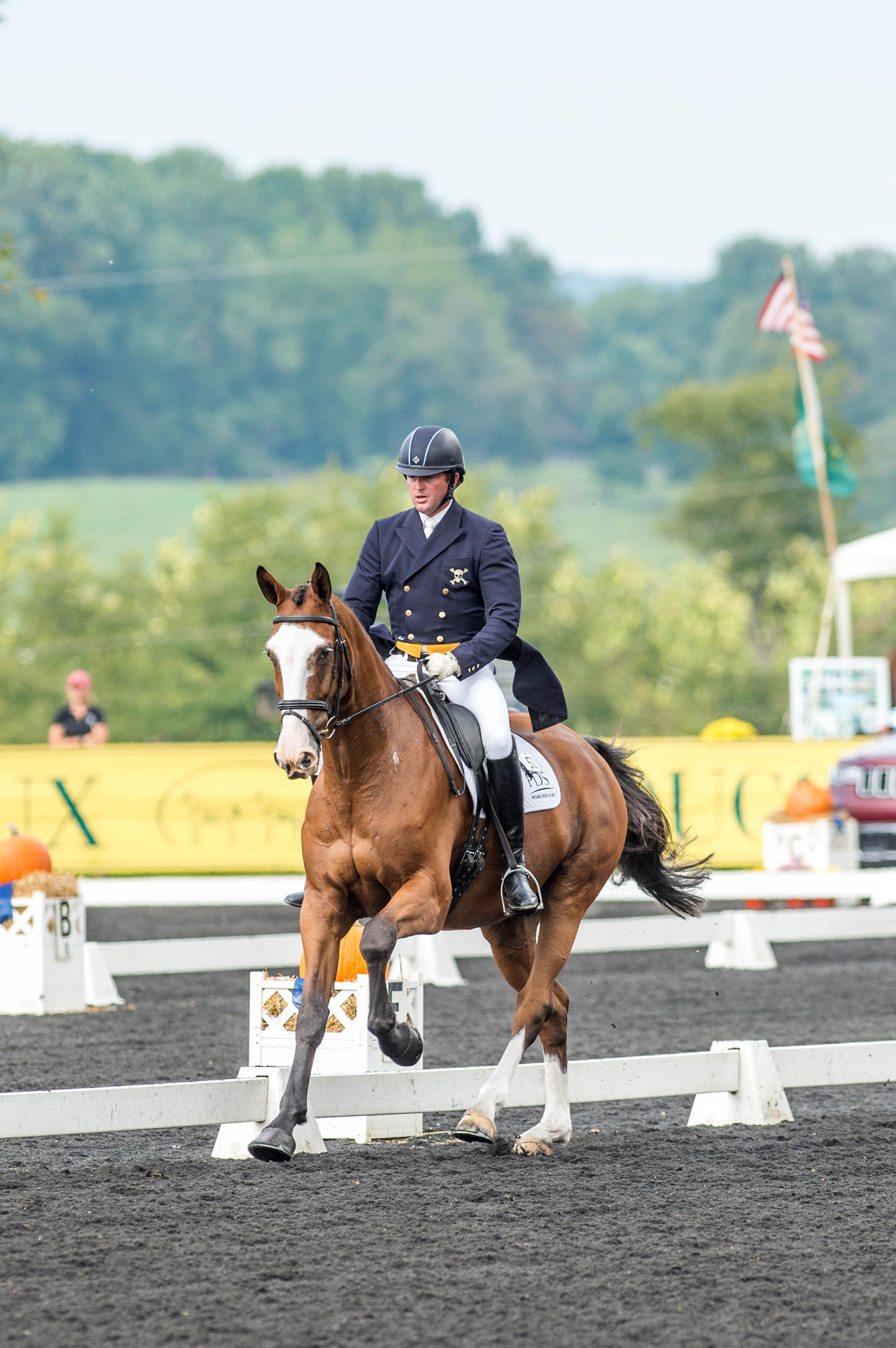
The last New Year’s resolution I ever made, I kept—I promised to never make any more resolutions. So far, so good. Still, horsemen need to keep improving, and it takes resolution to continue your education and performance. That being the case, I came up with a few topics for you to think about in the New Year. I can’t really call my suggestions “resolutions,” because I don’t make resolutions any more. I guess these are in the form of a wish list.
Learn Your Horse’s Body Mechanics
The first thing I wish you would do is to get to know your horse a little better. I don’t mean you should learn his stable name as well as his show name or become able to pick him out of a group. (If he is like most of mine, he is the one with manure stains on his ear.) No, I mean learn more about your horse as a horse, not just as an individual, but also as an animal.
Learn how his skeleton fits together. Learn about the equine foot, how it is constructed and the function of its various parts. Many of the soundness issues you will ever have to deal with will be in your horse’s foot. You might as well understand what the vet is talking about if she says (for instance) that your horse is developing navicular disease.
When working on dressage, everyone knows their horses should not overflex (except for most dressage judges—they seem to like it). What happens to the tendons and ligaments surrounding the cervical vertebrae when the horse is over-flexed? Is this position injurious to your horse and if so, is it reparable? I’m going to return to this in a minute in another part of this article, so hold that thought.
… For Instance, the ‘Engagement’ Thing
What muscles are we talking about when we talk about a horse using his topline? What is the muscular process by which a horse reaches forward under his body with his hind leg? What is actually going on with your horse’s body when he engages? Riders are increasingly sophisticated about what their horses are supposed to do in their dressage work, but many do not understand the mechanical process involved.
You probably have been told that when your horse engages, he lifts in front and grows taller. Is that what really happens? Does he suddenly grow from 16.2 to 17 hands? Obviously, that is not what happens. I have heard dressage professionals talking about a horse’s ability to “sit” during his work, and this is another way of describing the process of engagement. Once we understand the roles that muscles, ligaments and skeletal parts play, we get a better all-around view of riding and training.
The first thing that springs to my mind when I am thinking about getting a horse to engage is the absolutely essential role that relaxation plays in this process. Rulebooks speak of the well-trained horse as being “free from the paralyzing effect of resistance.” If your horse is tense in his topline, this limits the range of motion of his hindquarters, which, of course, prevents him from answering your leg aid correctly.
Once you develop a more sophisticated understanding of your horse, your riding and training will improve. For example, turns on the forehand and hindquarters, half-circles, half-circles in reverse, leg-yielding and shoulder-in are all valuable suppling exercises. However, their value is greatly increased when you understand the specific effects of each. (I will get back to the interaction of theory and practice in a minute, but I am on a roll here.) Turn on the forehand, or work around the shoulders, tends to lower the horse’s forehand, while turn on the hindquarters, or work around the quarters, tends to lower his hindquarters, thus engaging them. Both exercises are valuable, but they are even more valuable when you choose a particular exercise based on its ability to specifically address your horse’s problem. It seems to me that the more you learn about your horse, the more you will be able to teach him.

… And How You Engage With Your Horse
Another wish I have for you is to think deeply about the role your horse fills in your life. Do you ride for physical exercise? Riding for physical exercise is a wonderful way to maintain your health, but the better you ride, the less actual exercise you will get. As your riding becomes more efficient and you become able to not just understand the concept of invisible aids, but to apply it to your daily riding, you will work less to obtain the same result.
What about riding as mental therapy, a relief from the stresses and strains of modern life? It is certainly true that the outside of your horse is good for your inside, but if your interaction with him is to be truly therapeutic, you must be present in the moment. Cell phones and ear buds are hugely distracting at a time when you should be relaxing and interacting with a fellow denizen of the natural world. Horses do not perceive the natural world in the same way that we do, and we should attempt to understand them and relate to them. It is ironic that in order to support their horse addiction, many people work all day in a gray, featureless work cubicle, staring at a flickering computer monitor while dreaming of escaping to the stables to ride their horse. Yet too often they clamber aboard and walk away aimlessly with a fixed hand while talking to their pal in the next arena about the cutest horse photo they just saw on social media. Your time spent riding your horse is priceless—don’t waste it by shutting yourself off from him.
Base Your Practice On Theory
I mentioned earlier that I wanted to talk a little more about thinking deeply in regard to riding and training. This process will be greatly enhanced when you learn more about the theory of riding and training. Humans have interacted with horses for much of our history and have recorded their observations about riding and training since early times. One of the earliest is probably Xenophon’s On Horsemanship, published about 350 B.C. If you want some good advice, read it. Some of the many things I took from it are: a humane and enlightened approach to the training of horses; to patiently teach any task to a horse by small, simple steps; and (my personal favorite) that breaking horses was a dangerous process and one that was better left to others. I really took that one to heart.
Lateral work is the key to suppleness and engagement, so we should study its development and correct usage. A good place to start is the Duke of Newcastle’s A General System of Horsemanship, published in 1658. You will find an excellent discussion of the theory and practice of lateral work here. I will leave it to the inventor of the shoulder-in and counter-canter, François Robichon de la Guérinière, to have the last word on this. In his excellent work École de Cavalrie, published in 1730, he said, “The opinion of those who feel that there is no need for theory in the art of riding will not prevent me, in any way, from supporting it as one of the most important necessities for the attainment of perfection. Without theory, the practice will always be uncertain.”
Most of us ride with some future goal of competition in mind, but practice without theoretical underpinning and planning is not really practice, it is just exercise.
… And Compete to Test Yourself
Well then, what about riding to compete? I saw an interesting bumper sticker the other day. It said something to the effect that you go to school, are taught lessons and then tested, but in life we are faced with tests, which teach us lessons. Unfortunately, many riders these days view competition as a lifestyle rather than an examination of their state of training. Many of our successful coaches have developed business models that encourage this viewpoint, and in this I think they are wrong. Competition should provide us with an accurate evaluation of our state of training, not a ribbon. Certainly, we should take pleasure in social interaction with fellow horse lovers. We should support organizers who provide good facilities, excellent footing and intelligent course design. However, our goal should not be to get a better placing or another qualification, but rather to test ourselves and our horses against our desire to enter into a perfect partnership with our horse. When we get close to this, we are in balance with our horse, connected and in balance with nature and—for those rare few moments— truly at peace with the world.
I hope you find peace in your world and that you approach the New Year with increased resolution.
This article was originally published in the January 2018 issue of Practical Horseman.










